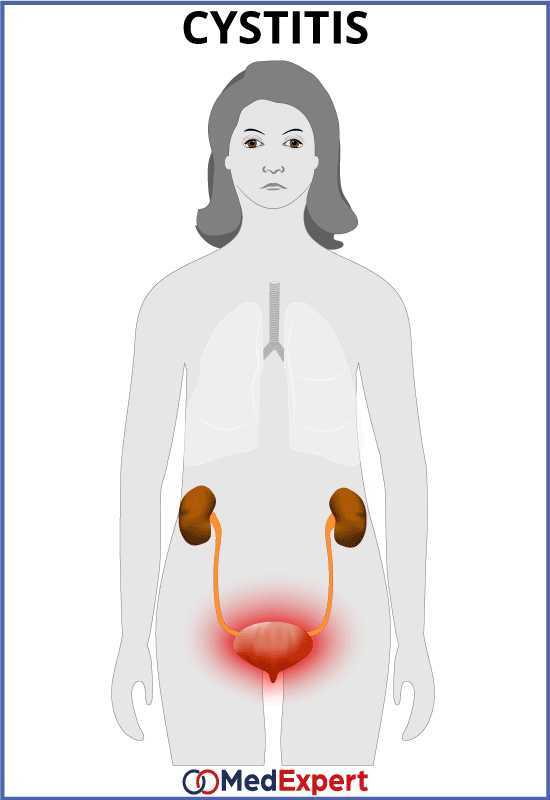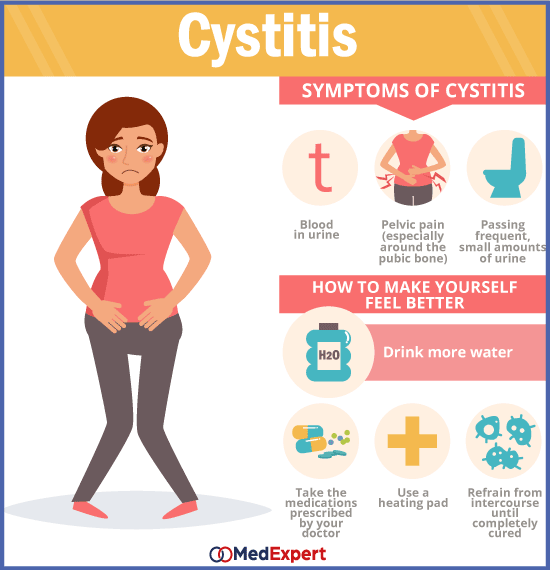URINARY TRACT INFECTION
One of the most common type of infections among women is a urinary tract infection. It may involve the whole urinary tract, but most frequently occurs in its` lower part. UTI symptoms are very specific and unpleasant. Urinary tract infection treatment in most cases includes a course of antibiotics to get rid of the infection. More detailed information about UTI`s, their symptoms, treatment options and ways to prevent urinary tract infection from recurring is presented below.
Urinary tract infections (UTI’s) are infections that develop in the kidneys, ureters, bladder and urethra.These infections commonly occur in the bladder and urethra. Statistics show that women tend to be at a greater risk of developing this infection than men.

WHAT CAN I DO TO PREVENT URINARY TRACT INFECTION FROM RECURRING?
In women from 25 to 45 years, UTIs most commonly occur within one to two days after sexual intercourse. If this is a repeated pattern, observe the following measures to minimise recurrent infections:
- Empty the bladder and wash the vagina after sexual intercourse.
- Consider alternative forms of contraception to diaphragms or spermicidal lubricants.
- Take one tablet of antibiotic before or after sexual intercourse.
Post-menopausal women with recurrent UTIs should consider having the vagina and cervix assessed to rule out early cancers or atrophic vaginitis. In atrophic vaginitis, topical oestrogen creams can boost the vaginal lining and reduce the colonisation of aggressive bacteria.
Women whose UTIs are not related to sexual intercourse may consider self-directed therapy.
Patients are given a three-day course of antibiotics to keep on standby, and they can start treatment immediately once they recognise the onset of UTI symptoms. However, they must consult their doctors should their symptoms persist after the course of antibiotics has ended. Another popular remedy is to take cranberry juice or supplements regularly, although this has still not been scientifically proven to reduce the incidence of UTIs.
UTI SYMPTOMS
UTI’s don’t always have symptoms but when they do, they include the following:
- Strong persistent urge to urinate
- Burning sensation when urinating
- Passing frequent, small amounts of urine
- Urine appears cloudy
- Blood in the urine
- Strong smelling urine
- Pelvic pain (especially around the pubic bone)

URINARY TRACT INFECTION TREATMENT OPTIONS
ANTIBIOTICS
To prevent occurrence of the urinary tract infections in men, the following option can be applied:
- Circumcision: The surgical removal of the foreskin at its attachment to the base of the glans of the penis. It is perhaps the most common surgical procedure performed worldwide, with about one-third of the world’s male population being circumcised.Circumcision is most commonly performed using either the dorsal slit or the sleeve techniques. The excess foreskin is divided down to the base of the glans penis and removed, leaving a cuff of healthy tissue around the glans penis. Bleeding points are controlled (usually with cautery), and the edges of the two layers are stitched together using absorb-able sutures.In certain centres, a CO2 laser is used to remove the excess foreskin. This is reported to result in less bleeding during the surgery itself, shortening the duration of the surgical procedure.
In newborns and children, circumcision is usually performed with the aid of a Plastibell device (a plastic ring that is placed onto the head of the penis).Depending on the patient’s (or parents’) preference, the surgery many be performed under local anaesthesia, penile nerve blocks or general anaesthesia. In most uncomplicated cases, it should not take more than 30 minutes to complete.
DIAGNOSING URINARY TRACT INFECTION
Tests used to diagnose UTI’s include:
- Urine test: The results of your urine test will be examined to check white blood cells, red blood cells and bacteria.
- Uroflowmetry: Urinating into a device that measures the volume and speed of urination. Your urine is measured electronically and the flow rate is calculated as millilitres or urine passed per second.
- Post-void Residual Urine Volume: A non-invasive screening test that measures the residual urine left in the bladder after voluntary void.
- Cystoscopy: A narrow tube (cystoscope) is inserted through the urethra. This tube has a lens and fibre-optic lighting system that allows the doctor to examine the inside of your urethra and bladder.


